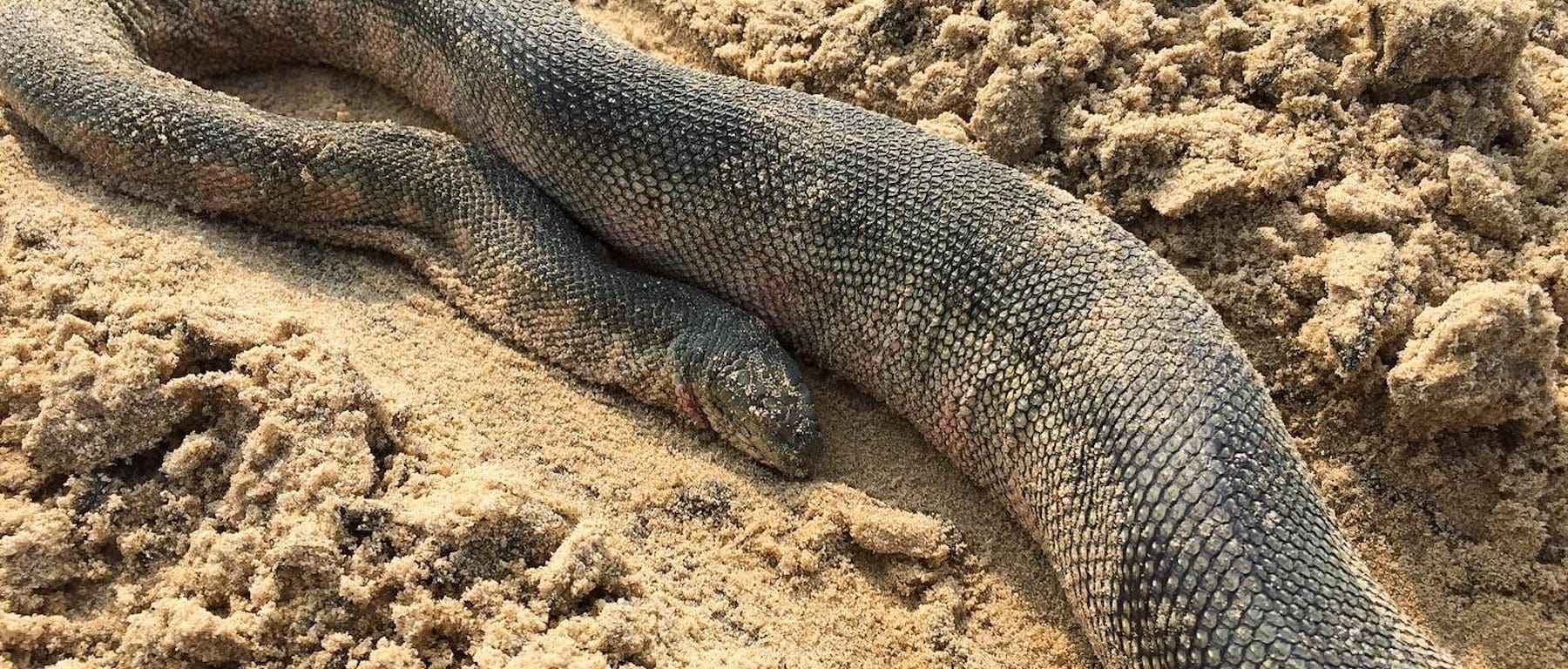In the early winter of 2015, I happened to visit Goa with a few colleagues. We did the usual Goa things and one clear November morning saw us watching fisherfolk haul in their catch at Baga Beach in Bardez.

Under a clear blue sky, the Arabian Sea washed the shore with deep, sighing breaths. On the sand, fishing boats were moored, and the fishermen were unloading their catch.

Nylon nets were heaped like puffy clouds on the sand. Enormous circular wicker baskets of fish were laid out. Stray dogs swarmed the beach, making friendly gestures at the fisherfolk and ensuring that they were noticed for their good behaviour; this was not a one-time raid, it was a source of livelihood for them equally.


My eyes wandered to a wrinkled plastic sheet laid out on the sand. Spread out on it was the bycatch — the bric-à-brac of the fishermen’s spoils — sundry fish, prawns, sole, a baby shark… These had some commercial value — at the end of the day they’d be sold off to bargain-hunters looking for a cheap enhancement to their evening meal.

But some things that are caught have no value at all. Worse, they are seldom returned to the sea. Beside the boat, at a safe distance from the fishermen, the sinuous form of a sea snake writhed on the sand. We walked up to it.
The sea snake was about 2 metres long. It had a thick build and its grey-brown body was peppered with sand. The snake was barely moving. It appeared to be dead but I observed a subtle twitch of its head. There were impact injuries and a few wounds on its head and neck. It was exhausted and appeared to be close to death from dehydration.

This was a Hook-nosed Sea Snake (Enhydrina schistosa), a highly venomous elapid serpent that is known to be responsible for over 90% of sea snake bite fatalities. I could see why the fishermen had no sympathy for it, for they refused my requests to release it back in the water.
“Mar jaana chaahiye, shaitan hai woh,” said one surly-looking fisherman who identified himself as Vincent. The silver crucifix pendant hanging from a black thread around his neck glinted in the sun as he cast a look of derision at the snake. “He should die, he’s the devil.”

Hook-nosed Sea Snakes, also known as Beaked Sea Snake, Common Sea Snake or Valakadyn Sea Snake, are often hauled in with catches, especially by trawlers, and bites are reported frequently. Fishermen in Kerala and Tamil Nadu know it by the name Vala Kadiyan (literally, Net Biter), which is the root of the alias Valakadyn. They are known to be aggressive and deliver a fatal, venom-packed bite loaded with a potent cocktail of neurotoxins and myotoxins, agents that attack the nervous system and muscle tissue respectively. A single bite delivers about 7-9 mg of venom, while the lethal dose for humans is about 1.5 mg!
Found across the warm tropical waters of Australasia and Asia, Hook-nosed Sea Snakes feed on fish (another reason for the fisherman’s ire) and are able to dive deep to 100 m and stay underwater for over five hours. They have the ability to eliminate salt from the ingested water, an adaptation that helps them survive in the saline environment.

When I stepped closer to study the snake, Vincent the fisherman warned me to step back. “He’s crafty, this one. He pretends to be dead.”
My research confirmed this claim: sea snakes have been observed to feign death while washed up on shore. I asked the fisherman what he was going to do with the snake. He jabbed an oar in its direction and said, “We’ll kill him properly once we’re done with our work.”
For this hapless sea snake, it appeared there was little to choose between the devil and the deep sea.
- TL;DR – Death Stalks Like A Marabou Stork - July 24, 2024
- Dimorphic Egret – Meet this East African mystery bird - June 8, 2024
- Encounter: Northern Treeshrew in Arunachal Pradesh - May 19, 2024

